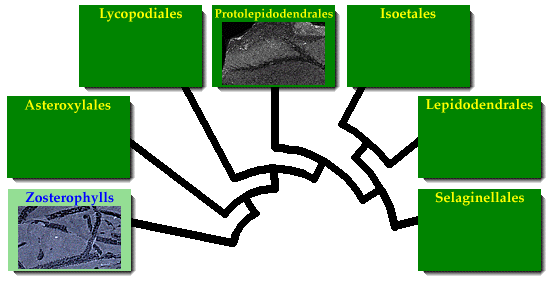



Lycophyta: Systematics






There is almost universal agreement on the monophyly of the Lycophyta, and a general agreement that their closest relatives were the now extinct zosterophylls, which resemble the lycophytes structurally, but lack microphylls.
There are about 1100-1200 species of lycophytes living today. The three groups to which these belong, the Lycopodiales, Selaginellales, and Isoetales, are all relicts of a severe extinction of lycophyte groups in the latter half of the Pennsylvanian, about 296 million years ago. At that time, most of the Lepidodendrales became extinct.
Lycophyta is one of the two major clades of vascular plants, the result of a split which occurred by at least the early Devonian, but possibly in the Silurian. This means that the group has been evolving independently of other vascular plants for over 400 million years. In that time, the lycophytes have evolved many convergent features, including leaves, wood, trees, and structures remarkably similar to seeds. By comparing these convergences across different groups in which they have appeared, we can learn a great deal about how plants evolve.
Back to UCMP Home Page
*Note: these pages were oringinally built in 1996. We can no longer guarantee that they will work properly. Use at your own discretion.

